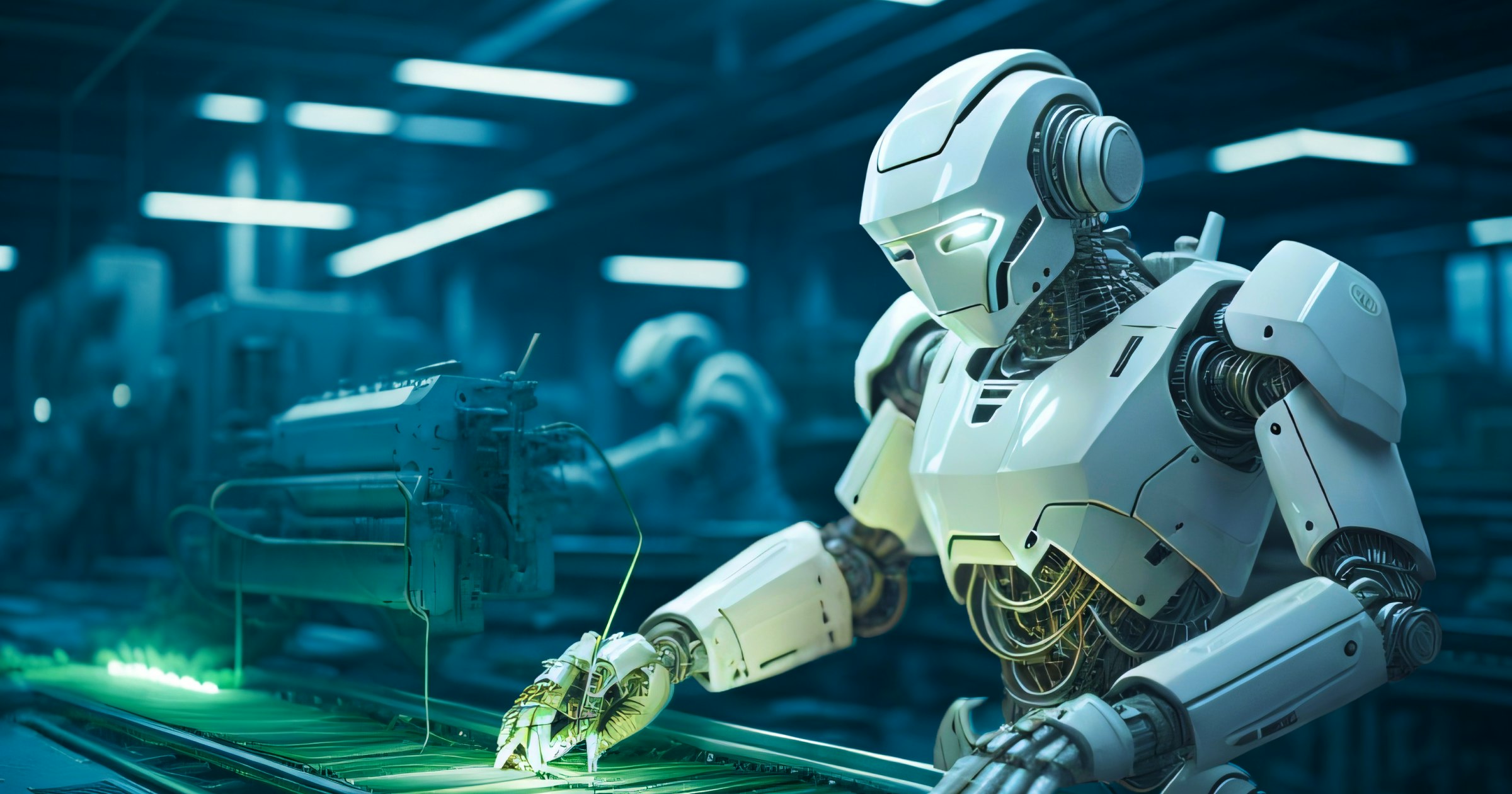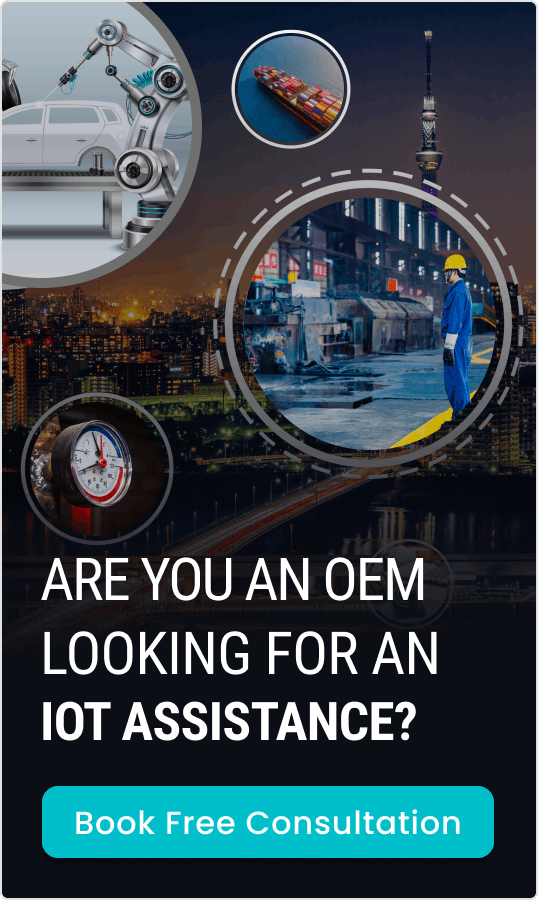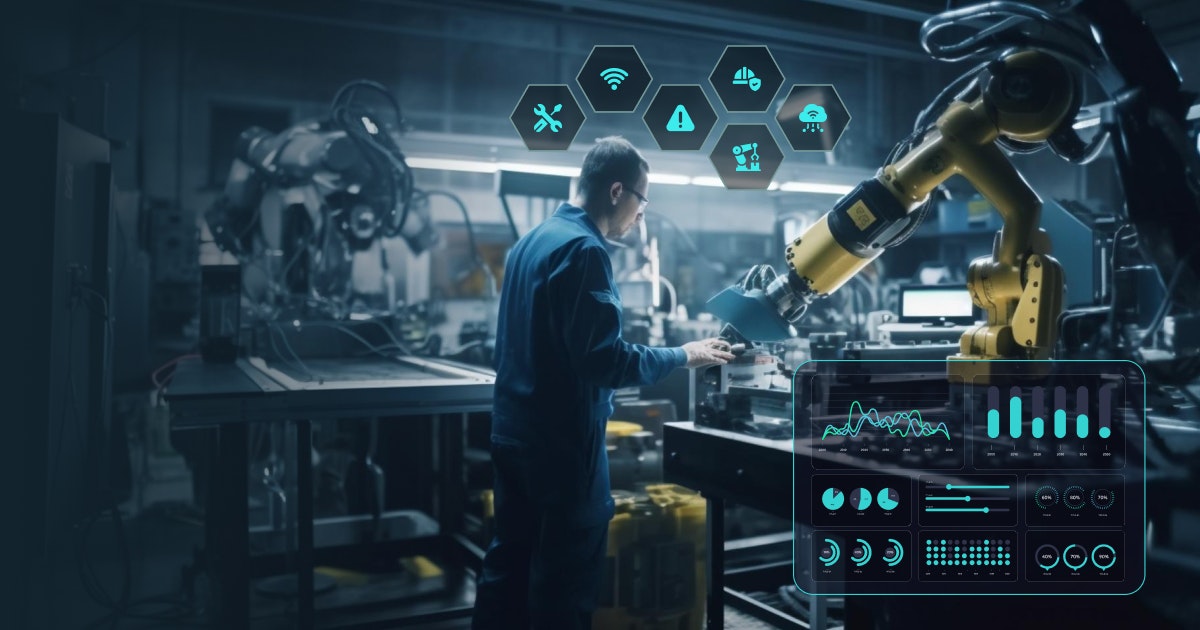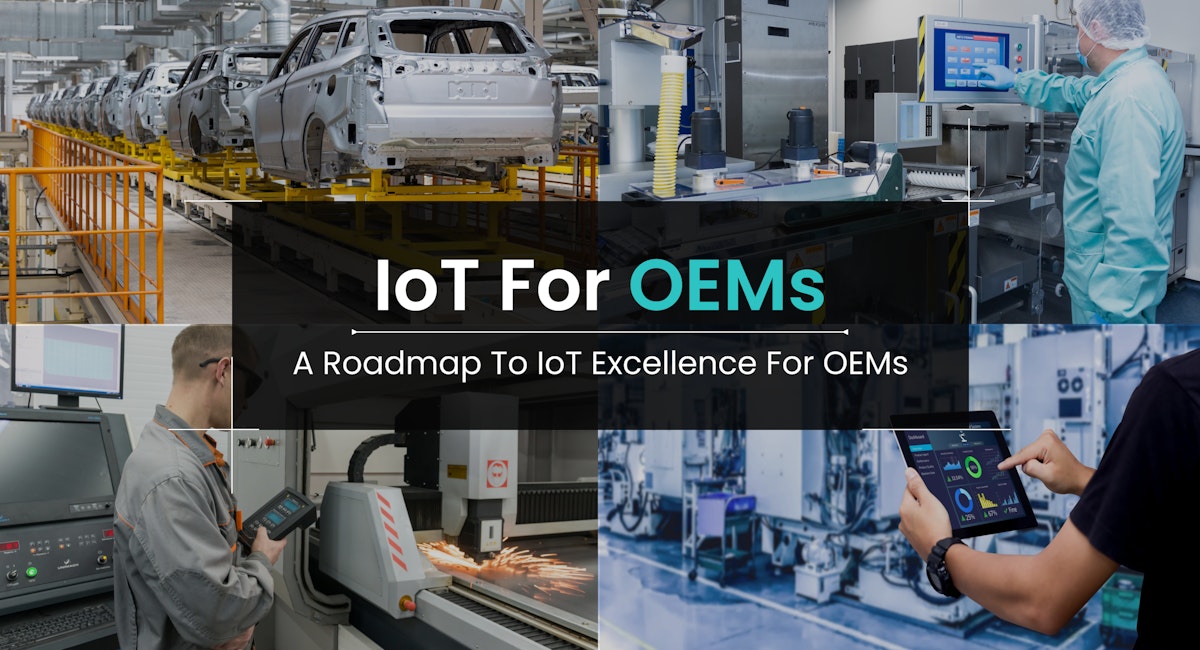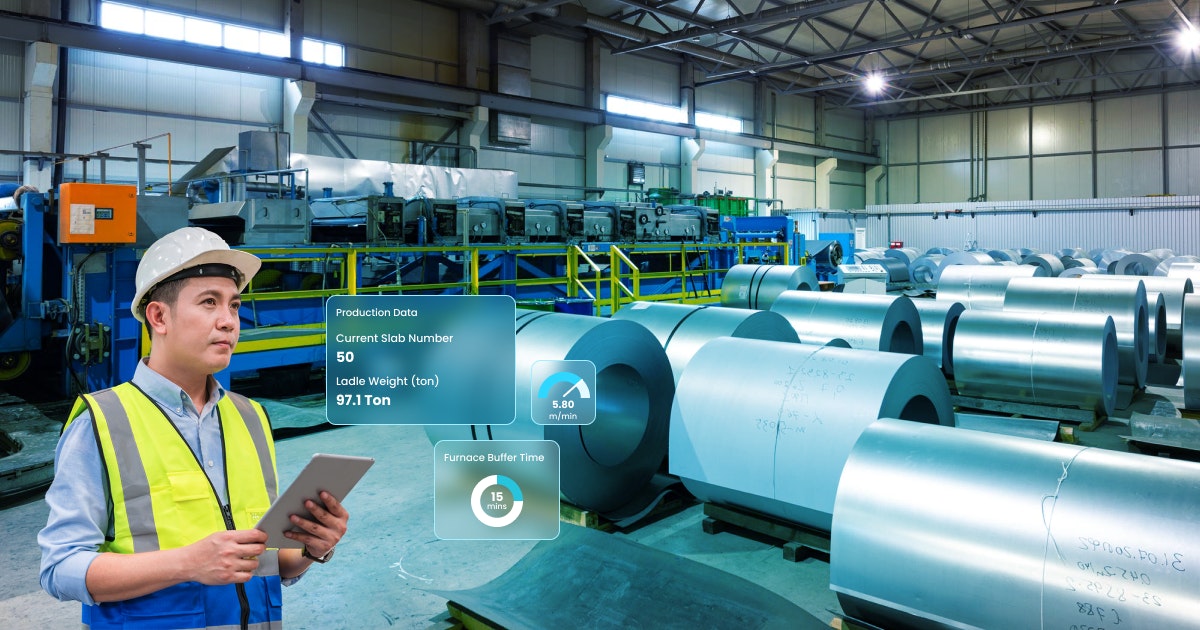Table of Content
The Industry 4.0 revolution has automation at its core. Along with promoting the use of various ingenious technologies, it is primarily characterized by automation. One of the remarkable technologies that form a subset of Industry 4.0 is RPA.
RPA has expanded as Robotic Process Automation has the power to transform the manufacturing industry. As per statistics, the global RPA market stood at $2.3 billion in 2022. It is further expected to rise with a CAGR of 39.9% until 2030. This rapid rise in the market is governed by the faster adoption of automation by businesses worldwide.
Some businesses are even combining RPA with AI for operational efficiency and productivity. As RPA has the ability to handle all the repetitive, rule-based, and mundane industrial tasks, its scope has widened beyond manufacturing. Let’s read ahead and learn how RPA is beneficial for OEMs.
What is RPA?
Robotic Process Automation may sound like the use of physical robots, but it is not. RPA is a state-of-the-art software technology that helps in building and deploying software robots. These robots can mimic or handle computer-based tasks like humans.
Simply put, RPA is like a virtual assistant that can handle repetitive and mundane tasks for humans. This allows the human workforce to focus on more important tasks. Some of the repetitive tasks that a software robot can handle are data entry, data extraction, transaction processing, report generation, filling out forms, copying documents, and much more.
Using RPA in manufacturing or other industries saves time, reduces time to market, minimizes process error, and boosts innovation.
Are You Ready to Transform Your Production Line with Intelligent Automation Bots?
Let's Get StartedHighlighting the Benefits of RPA!
The use of RPA is not just for manufacturers; it can be of use for other sectors too. Thanks to the remarkable benefits of RPA, industry sectors like telecom, healthcare, banking, finance, etc. leverage its benefits. Here are some of the primary benefits of Robotic Process Automation
1. Faster operations
As RPA can take away a lot of rule-based or repetitive tasks from the labor force, the overall speed of the operations can be increased. The best thing here is that so much time is saved without the chance of error. An example of this can be inventory management, where a bot can place orders, track deliveries, and generate receipts. Thereby speeding up the operations.
2. Better efficiency and accuracy
With RPA working on completing menial tasks of your business workflow, you can achieve better efficiency and accuracy. With no human intervention, tasks like data entry or transaction processing can be done faster and around the clock, improving efficiency. Further, with RPA, the chances of errors are lower, which boosts accuracy by reducing product defects.
3. Cost saving
If you have four people doing the data entry job, they can be replaced by one bot. Therefore, saving you a lot of money. Further, as there are zero chances of errors, no rework cost is involved, which saves you money.
4. Scalability
It is only a matter of time when you need to scale your business. In a scenario like this, hiring new people to handle your increasing tasks can be a tiresome and time-consuming process. On the other hand, making modifications to a bot can be simple and quick, making scalability with RPA easy.
5. Better productivity
With RPA, your workforce can leave the repetitive tasks to the bots and focus on more strategic and creative tasks. This provides time for the workers to engage in higher-value activities and thereby improves productivity. As per statistics, 95% of organizations using RPA say that it has improved productivity.
6. Real-time data insights
Robotic Process Automation bots can collect and analyze data at remarkable speeds from several sources. Based on the insights of the RPA, business owners can make better decisions regarding product improvement, marketing, etc.
7. Continuous operations
Unlike the human workforce, RPA does not require a coffee break or a week off. Therefore, they can work 24x7 around the clock, without getting tired. This ensures continuous operations, promising efficiency, and productivity.
8. Predictive maintenance
RPA can be used with various other technologies for added functionality. When used with IoT, sensor data can be fed to RPAs, and they can analyze it to find irregularities. In case of any irregularities in the data, predictive maintenance can be implemented to prevent system failure and downtime.
How can OEMs use RPA?
There are several benefits and applications of RPA, most of which are in the manufacturing sector. As per stats, the market size of RPA in manufacturing was valued at $7.6 billion in 2021. Moreover, it is expected to grow at a CAGR of 33.2% by 2030. The applications of RPA for OEMs back this exponential rise.
Here are some of the prime applications!
1. Inventory management
Inventory management is one of the primary parts of the manufacturing workflow. For a brand like Amazon, there can be millions of items to restock, audit, and track for inventory management. The human workforce would not be effective in a scenario like this. Hence, RPA can be implemented.
With RPA, OEMs can automate emails, dispatch processes, file invoices, and digitize paperwork. Further, the process managers can track deliveries and monitor inventory levels. The continuous data enables them to make better decisions and place inventory orders on time.
Walmart is a great example of this. The brand uses over 500 RPA bots to track inventory and deadstock.
2. Invoice processing
Invoice processing can be a tedious process if done manually. With hundreds of invoices to fetch, compare, and process, there is a high chance of error if a human is working on the task. With RPA, the chances of error can be reduced significantly.
An RPA robot can easily extract data using OCR from the forms, convert it into a structured format, and enter it into the company's ERP system. These bots can also compare invoices and check for duplication to boost efficiency and reduce redundancy.
Siemens is a great example of this. It has integrated RPA for invoice processing into its workflow.
3. Proof of delivery
Proof of delivery documents prove that the goods or products were delivered to the respective customers. With RPA robots integrated into the logistics ERP modules, shipping data can be fetched and updated in the ERP Module. This reduces invoice processing time and enhances accuracy.
4. Data management
As RPAs capture a lot of data, this data would require storing, updating, and analyzing. Therefore, besides collecting and analyzing the data, RPAs can also be used for data cleaning and migration. You can use RPA and OCR to process and schedule data imports and conversions.
5. Automating administration tasks
As per a study by McKinsey Global Institute, workers spend 28% of their workweek managing emails. Other than that, administrative tasks like data entry, phone handling, document preparation, recording attendance, scheduling meetings, etc., can take up a significant amount of time from the worker’s working hours.
Therefore, automating these tasks with RPA is crucial. This can help workers focus on better and more critical tasks.
6. Order fulfillment
Apart from the delivery and warehouse processes of order fetching and packing, RPA bots can complete end-to-end order fulfillment tasks. Bots can be programmed to identify order emails, download the order requirement files, extract the data, and feed it into the ERP system. Customers can also be updated about the availability of the product and shipping options.
Amber Beverage Group leveraged RPA to streamline the process of purchase order approval.
7. Quality control
Manufacturing plants can ensure the product's optimum quality with the help of RPA. But RPA has to be used with other technologies like IoT and AI. With data from sensors and cameras installed on the production and assembly lines, RPA, with the help of AI, can find quality issues and suggest rectification measures.
8. Compliance and regulatory reporting
By automating tasks like data collection and analysis, RPA can help manufacturers comply with regulations. The RPA can be programmed in such a way that it verifies the source of the data and checks data access permissions before collecting it.
Technologies Assisting RPA in the Future!
As the market and scope of RPA are surging, several technologies will broaden its capabilities in the future.
IoT
The Internet of Things is a network of internet-connected devices. With the use of IoT and RPA in the future, businesses can access real-time data from sensors and trigger the required actions based on the data analysis done by the RPAs.
AI
As RPAs can be programmed, they can also be trained to learn from the data fed to them. With AI technologies like machine learning, deep learning, and NLP, bots can be trained to learn from data and make decisions. With AI, bots can also handle unstructured data, enhancing the RPA's adaptability.
IDP
Intelligent Data Processing combines OCR (Optical Character Recognition) and AI. The technology enables seamless data extraction from forms, invoices, and other documents, reducing time spent on manual data entry.
Other than these, other technologies can enhance the capabilities of RPA. These technologies include but are not limited to quantum computing, blockchain, hyper-automation, etc.
Cut Costs and Errors: Implement RPA in Your Manufacturing!
Contact UsConclusion
In the abstract, RPA is a revolutionary technology that has the power to change every industry sector for the better. By driving operational efficiency, accuracy, and innovation, it can easily promise a bright future for the manufacturing industry. If you own a manufacturing business and want professional assistance with automating inventory management, order fulfillment, quality control, etc., with RPA, Intuz is the best choice.
